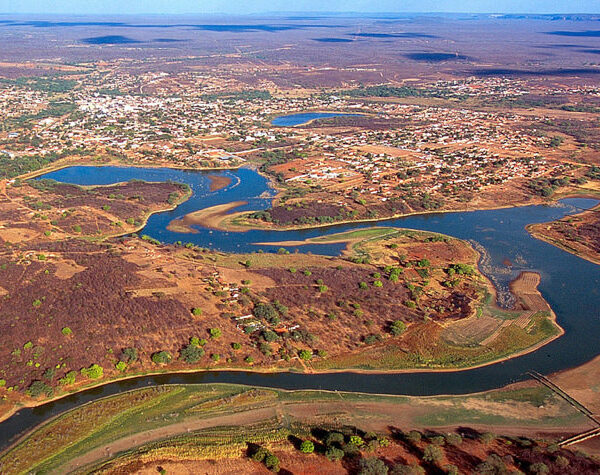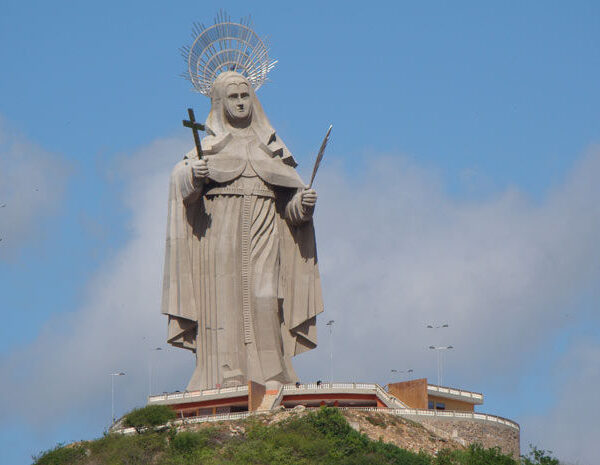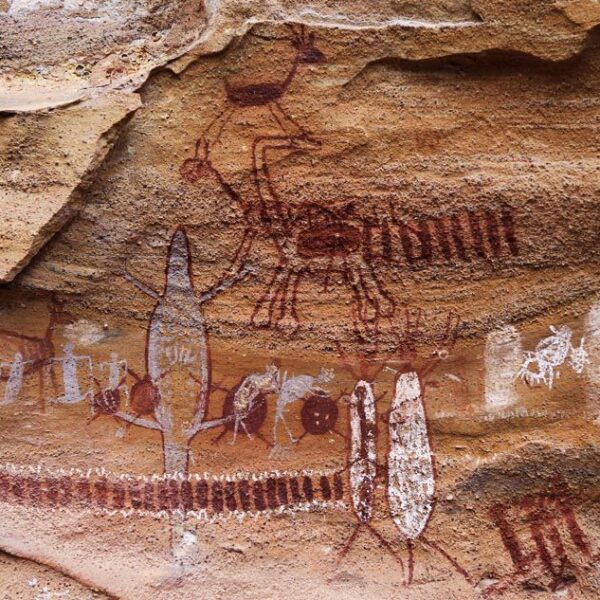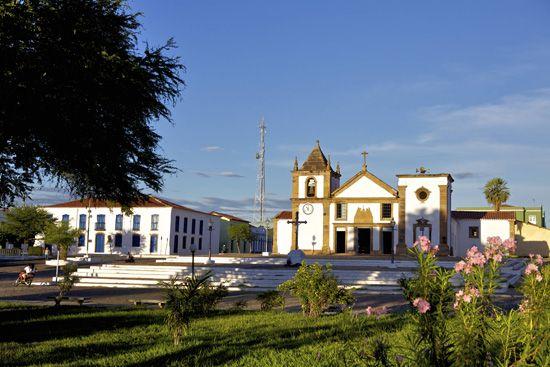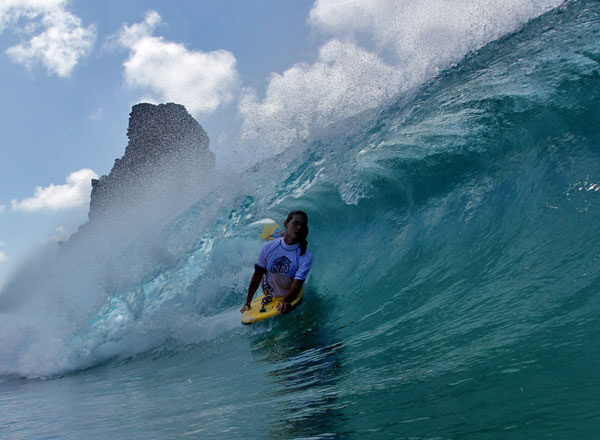São Raimundo Nonato, located in the state of Piauí, is a city that attracts tourists interested in history, culture, archaeology and nature. São Raimundo Nonato is the main gateway to the Parque Nacional da Serra da Capivara, one of the most important archaeological sites in Brazil and the world. The […]
Oeiras and São Raimundo Nonato
Oeiras and São Raimundo Nonato: Piauí’s Historical and Archaeological Heritage
The State of Piauí has centres of great historical, cultural and scientific importance, among which the municipalities of Oeiras and São Raimundo Nonato stand out.
2. Oeiras: First Capital and Colonial Legacy
2.1 Historical context
Oeiras, located in the centre-south of the state, was the first capital of Piauí, having been elevated to city status in 1759.
The city remained the administrative seat of the provincial government until 1852, when the capital was transferred to Teresina for logistical and economic reasons.
2.2 Architectural and religious heritage
The city preserves a remarkable collection of colonial architecture, including old mansions, historic squares and centuries-old churches.
Of particular note is the Igreja Matriz de Nossa Senhora da Vitória, built in 1733 on the site of an earlier hermitage dating from 1697.
It is the oldest church in the state, a symbol of the ecclesiastical presence and urban organisation during the colonial period.
2.3 Tourist Attractions
Among the main cultural events in Oeiras is the Fogaréu Procession, held annually during the Easter Week, which brings together locals and visitors in a celebration with strong religious symbolism.
The Historical Centre of Oeiras, declared a National Heritage Site, is an attraction for scholars, tourists and believers seeking to understand the formation of Piauían society.
3. São Raimundo Nonato: Archaeology and American Prehistory
3.1 The Serra da Capivara National Park
3.2 Facilities for scientific research and dissemination
3.3 Prominent figure: Niède Guidon
4. Final reflections
Tourist Route in Rio Grande do Norte: Explore Unique Sites
Rio Grande do Norte is a Brazilian state that stands out for its stunning tourist routes, full of beaches surrounded by dunes, archaeological sites and religious sanctuaries. With its variety of unique attractions, the state extends far beyond its capital, Natal. This guide proposes an 8-day itinerary to explore the […]
Dunes of Rio Grande do Norte: A Paradise for Tourists
Buggy rides in the dunes of Rio Grande do Norte Buggy rides in the dunes of Rio Grande do Norte are one of the most exciting and iconic tourist experiences in the state. Offering a combination of adventure, beautiful scenery and contact with nature, these tours are highly sought after […]
Spinner Dolphins in Fernando de Noronha: A Guide
Spinner dolphins in Fernando de Noronha: a natural spectacle In the bay of Baía dos Golfinhos, in Fernando de Noronha, there is a high concentration of spinner dolphins (Stenella longirostris), an oceanic and tropical species known for its acrobatic behaviour, jumping out of the water with up to seven turns […]
Santa Rita de Cássia: A Monumental Pilgrimage Site
Saint Rita of Cascia is the patron saint of the city of Santa Cruz in Rio Grande do Norte. The Statue of Sa Rita de Cascia, next to the Tourist-Religious complex, on the banks of the BR-226 motorway and the Trairi river, attracts thousands of devotees every year. At 56 […]
Wreck of the Corvette Ipiranga in Fernando de Noronha
Corvette Ipiranga (V-17): One of Brazil’s most iconic shipwrecks One of Brazil’s most famous shipwrecks, the Brazilian Navy’s Corvette V-17 – Ipiranga, lies at a depth of around 62 metres in the waters off Ponta da Sapata in the Fernando de Noronha archipelago. Very well preserved by the island’s dive […]
Discover the Enchanting Serra da Capivara National Park
Serra da Capivara National Park, located in the south-east of the state of Piauí, Brazil, is one of the country’s most fascinating tourist destinations, especially for lovers of history, archaeology and nature. Declared a UNESCO World Heritage Site in 1991, the park is known for housing the largest concentration of […]
Oeiras: A Journey through History, Culture, and Religious Traditions
Oeiras, in Piauí, is a tourist destination that enchants with its rich history, culture and religious traditions. As the state’s first capital, the city preserves a vast historical heritage, with colonial churches, mansions and cobbled streets. History of Oeiras PI Oeiras has its origins in a chapel founded in 1695 […]
Sete Cidades National Park: A Journey Through Nature and History
Sete Cidades National Park, located in the state of Piauí, Brazil, is a fascinating tourist destination that combines natural beauty with unique geological formations and a rich historical and cultural heritage. The Sete Cidades National Park, in Piracuruca, around 200 kilometres from Teresina in Piauí, is home to around 500 […]
Teresina: A City of Modernity, Culture, and Natural Wonders
Teresina, the capital of Piauí, is a city that offers an interesting mix of modernity, culture and nature. As the only northeastern capital not situated on the coast, Teresina is known for its strategic location on the banks of the Parnaíba and Poti rivers, which meet at an important tourist […]
Discover the Beauty of Rio Grande do Norte
Taking a vacation in Rio Grande do Norte, Brazil, is a fantastic choice for those seeking a mix of stunning beaches, rich culture, delicious cuisine, and breathtaking natural landscapes. Strong winds, sun, dunes, beaches, cliffs and the friendliness of the people of Rio Grande do Norte accompany visitors along the […]
Fernando de Noronha Beaches: A Complete Guide
Fernando de Noronha Beaches: A complete guide Fernando de Noronha is an archipelago of stunning beaches, each with its own unique characteristics. Some are ideal for snorkelling, others for swimming, observation, surfing and other activities. Video about the beaches and attractions of Fernando de Noronha See the map of beaches […]
Fernando de Noronha archipelago
Fernando de Noronha Archipelago: History, Geography and Tourism The Fernando de Noronha Archipelago consists of 21 islands, islets and rocks of volcanic origin in the South Equatorial Atlantic Ocean. The main island, also known as Fernando de Noronha, is the only inhabited island and accounts for about 91 per cent […]
Surfing in Fernando de Noronha: Everything You Need to Know
Surfing in Fernando de Noronha: The Brazilian Hawaii of swells Fernando de Noronha is widely regarded as one of the best surfing destinations in Brazil and is often referred to as the Brazilian Hawaii due to its powerful and consistent swells. Wave Season The surfing season in Fernando de Noronha […]
Diving in the Fernando de Noronha Archipelago
Diving in the Fernando de Noronha Archipelago Diving is Fernando de Noronha’s biggest attraction. The waters are so transparent that the visibility on the seabed can exceed 40 metres. It is an excellent place to observe a natural system with around 230 species of fish, fifteen species of coral and […]
How to get there, when to go and what to do in Fernando de Noronha?
Fernando de Noronha: When to go and what to do Fernando de Noronha is located 545 kilometres from Recife, capital of the state of Pernambuco; 360 kilometres from Natal, capital of the state of Rio Grande do Norte; and 710 kilometres from Fortaleza, capital of the state of Ceará. How […]
